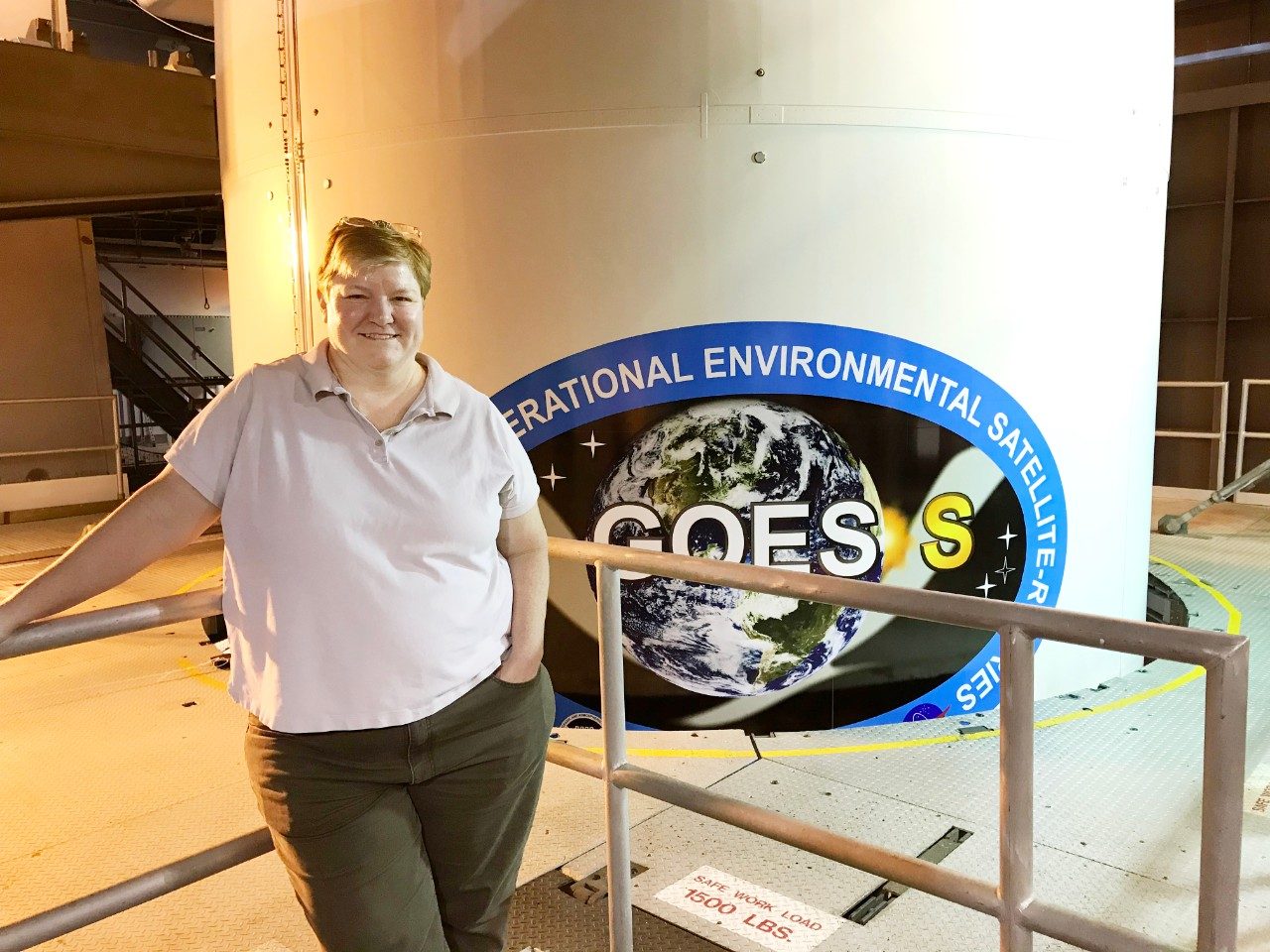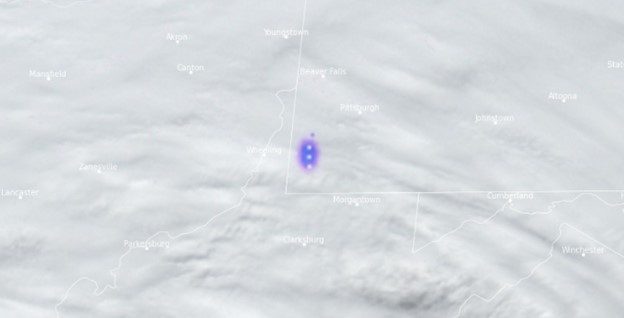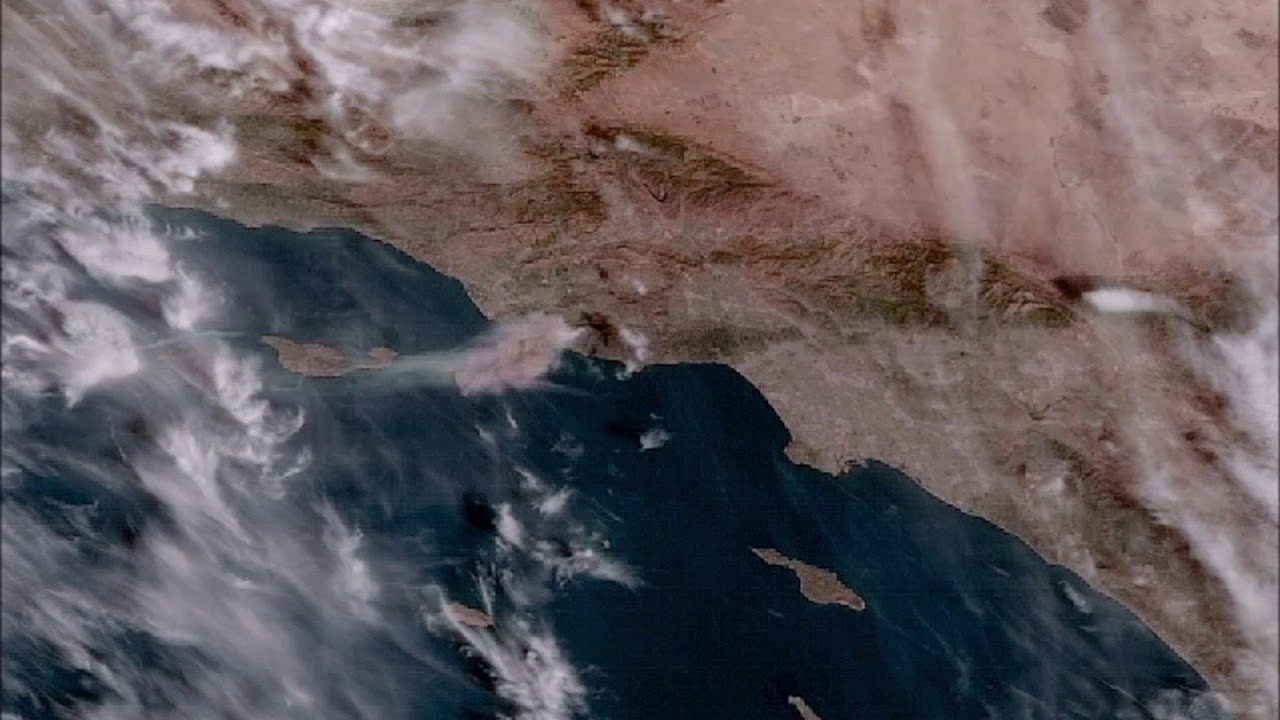When Pam Sullivan was five years old, she watched in awe as astronauts began landing and walking on the surface of the Moon. While most remember the first steps by those Apollo astronauts, she recalled another scene that had a profound impact on her life’s trajectory. “I was really fascinated by the people who were sitting at the consoles at mission control in Houston, with their headsets on—they looked so intense, looking at the screens,” Sullivan said. “That stuck with me and looked like an interesting job, so since I was a little kid, I knew that’s what I wanted to do.”
Sullivan was initially hired at NASA Goddard Space Flight Center to support the development of a previous generation of weather satellites. After working through roles supporting instrument development for NASA’s Hubble and Webb Space Telescopes, she returned to the weather and climate industry and is now NOAA’s program director for their GOES-R series of satellites, where she manages the team who are building the satellites and the ground systems in preparation for the penultimate launch of the satellite series, GOES-T, on March 1, 2022.

Getting a little meteor
The GOES-R series of satellites features a state-of-the-art instrument for monitoring and tracking lightning strikes as they happen across more than half the planet. “The Geostationary Lightning Mapper (GLM) is a brand new capability with this series,” Sullivan said. “It’s able to see lightning strikes that are 800 km long. That’s like having a cloud over Boston have a lightning strike in Washington D.C.”
The importance of monitoring lightning strikes comes down to understanding patterns that can tell forecasters of potentially severe weather. Sullivan said, “The GLM can detect those longer lightning streaks, which tend to generate more heat on the ground that could lead to fires. So, it’s been used to help forecasters predict when fires may start due to lightning. It’s a very fascinating instrument.”
The GLM is also capable of capturing other bright flashes in the sky. Meteors.

Fighting fires from 22,236 miles away

“It’s incredible how useful the satellites are for tracking fires and the lifecycles of fires,” Sullivan said. GOES-T is equipped with an advanced baseline imager (ABI) that has an improved resolution and temporal refresh rate over previous generations of GOES satellites. “When a fire starts, it sees the fire very quickly because the pixels are very small—sometimes the satellite will see the fire before anyone on the ground,” she said. This information gives firefighters a head start on battling wildfires. Forecasters can simultaneously use the satellite’s data to monitor the movement of a fire based on wind conditions, vegetation and other factors that may help it spread.
But it doesn’t end there. Sullivan said, “In the aftermath of a fire, when there’s a burn scar left on the ground, that area becomes more prone mudslides when there’s rain.” This data is important for ensuring that people on the ground are aware of potential dangers when returning to areas where fires have occurred.
“From before a fire starts to after a fire is extinguished, it’s almost like there’s a brand new tool for fighting and managing fires,” Sullivan said.
Improvements on board
The GOES-R series of satellites are all based on the same design. However, with each launch, improvements to the instruments are made based on the performance of the satellites already on orbit. “We’ve been fixing things we’ve found on GOES-R and S – the main thing being a challenge with the ABI on GOES-S that had a thermal anomaly that actually impacts the performance,” Sullivan said. At the beginning of working the ABI anomaly, the team did not know what the end state was going to be.
The issue was determined to be a problem with the cooling system, which degraded the performance of the infrared channels on the ABI. Ultimately, it came down to determining what went wrong, what the team could do to make it better on orbit and what is needed to eliminate these issues for GOES-T and U. Sullivan said, “In the end, GOES-17 ended up being a very good satellite, not a perfect satellite, but incredibly useful and we’ve got a new design with the GOES-T satellite that’s going to work.”





